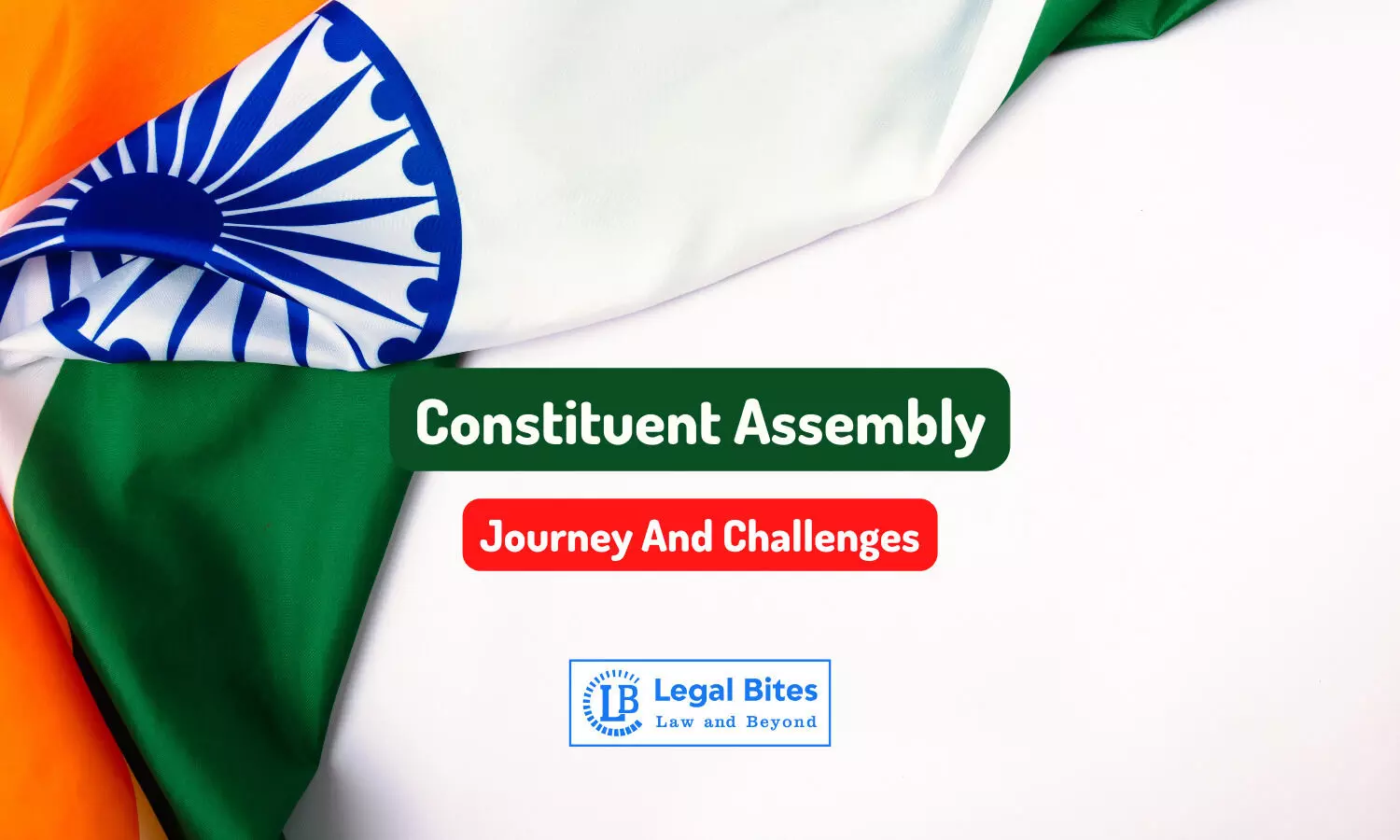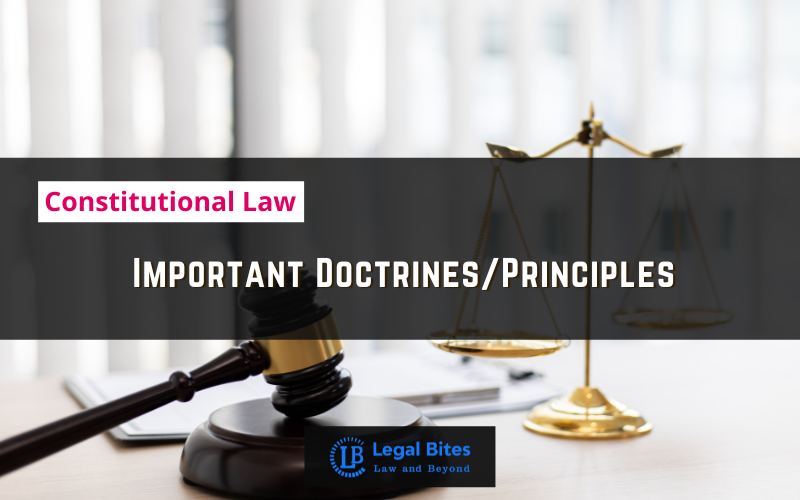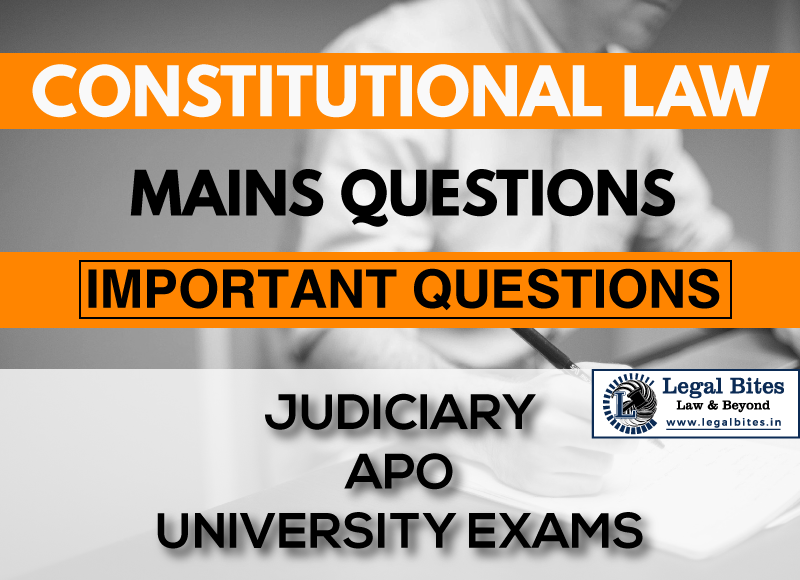Constituent Assembly - Journey And Challenges
The article discusses the Journey And Challenges of Constituent Assembly.;

The article discusses the Journey And Challenges of Constituent Assembly. Sagacious words of Dr B.R. Ambedkar: "However good a constitution maybe, if those who are implementing it are not good, it will prove to be bad. However bad a constitution maybe, if those implementing it are good, it will prove to be good". Constituent Assembly – Journey And Challenges The Constitution of India is the supreme rule book for democratic governance in India which came into existence on 26 January...
The article discusses the Journey And Challenges of Constituent Assembly.
Sagacious words of Dr B.R. Ambedkar:
"However good a constitution maybe, if those who are implementing it are not good, it will prove to be bad. However bad a constitution maybe, if those implementing it are good, it will prove to be good".
Constituent Assembly – Journey And Challenges
The Constitution of India is the supreme rule book for democratic governance in India which came into existence on 26 January 1950 and to date is the greatest milestone throughout the entire existence of our nation.
India became an independent country in 1947. It was the time for India to taste freedom, but with viciousness, trauma, and injury of displacement. It was not easy for India as it was born in very difficult and sensitive circumstances with freedom after centuries that came up with the partition of the nation.
Framing a constitution is never an easy task however it was particularly hard for India given the very turbulent circumstance at the time. A newly free nation with an exceptionally unequal social order was an overwhelming challenge to manage, particularly when it was all the while reeling under the impacts of partition based on religion.
However, the disturbance that went with independence didn't cause our pioneers to lose sight of the difficulties confronting the new country. As provided in the Cabinet Mission Plan, the 'Constituent Assembly' settled down to draft free India's constitution in November 1946.[1]
The fundamentals of the schemes suggested by the Cabinet Delegation were as per the following:
- Each Indian state or group of states and all provinces were allotted the total number of seats proportional to their respective populations, roughly one to a million. As a result, the provinces were to elect 292 members, while the Indian states were allotted a minimum of 93 seats.
- The seats in each province were distributed among the three main communities, Muslim, Sikh and general, in proportion to their respective populations.
- Members of each community in the provincial legislative assembly elected their own representatives by the method of proportional representation with a single transferable vote.
- The method of selection in the case of representatives of Indian states was to be determined by the Constitution.[2]
After the Indian Independence Act of 1947 was passed, the body of the constituent assembly became independent and sovereign. Its members were elected by the members of the provincial legislative assemblies in an indirect election, as indicated by the scheme suggested by the Cabinet Delegation.
Some of the eminent individuals of the Constituent Assembly were Pandit Jawaharlal Nehru, Dr Rajendra Prasad, Dr B.R. Ambedkar, Sardar Vallabhbhai Patel, Maulana Kalam Abdul Azad, C Rajagopalachari, notable jurists like Alladi Krishnaswamy Iyer and many other philosophers, economists and political leaders etc.
Special regard must go to Constitutional Advisor Dr B.N. Rau, who arranged and compiled the underlying draft that the assembly debated in the wake of taking contributions from constitutional experts from the nation and abroad.
A Drafting Committee was appointed by Constituent Assembly comprising of seven members on 29th August 1947 which was headed under the chairmanship of Dr Ambedkar. It took almost three years to frame the Constitution of India by the Constituent Assembly.
India was ready with its new Constitution on 26th November 1949 while officially coming into existence on 26th January 1950 as the Constitution of India.
The essential five lines of standards the committee restricted it to were – the nation being a Republican State, a Federal structure, a Parliamentary type of government, Fundamental Rights and Duties to All, and an autonomous legal branch, i.e. Independent Judiciary.
Prominent difficulties faced by the Constituent Assembly in framing the Indian Constitution were:
- India with a huge population of approx 360 million, and with such a diversity of different religions, castes, classes, and sects. Hence, they needed to outline a Constitution which could fulfil the goals of each area of society. This was not a simple task.
- Democratization isn't simple in a country with a long history of inequality among individuals based on caste, community, gender, colour and race. Therefore ensuring the democratic spirit of the constitution with certain restrictions on it was a great challenge for the assembly.
- The individuals of India were rising from the status of subjects to that of citizens, so it was necessary to make such rules that each citizen gets equal protection. it was equally important for the framers to incorporate the rights and duties of all the country's citizens.
- The assembly was required to design the constitution in a way to ensure the prevention of communal violence in the coming days as people had witnessed giant violence due to partition, which was very traumatising for them.
- The issue of language was another genuine matter for the assembly. A few leaders accepted that English should be discarded and Hindi should be advanced as the national language. Be that as it may, this thought was opposed by the members from non-Hindi territories. They didn't want an inconvenience in Hindi for the individuals of those territories. It was decided that both Hindi and English would be the 'official language' where English could be used for communicating among different states.
- The tough task was merging the princely state who were allowed to join India or Pakistan or remain independent.
These were the challenges for the framer of the constitutions to keep the country strong and unite for the future and maintain its democracy. The completion of the Constitution and its adoption was a notable occasion for India, which was enthusiastically seen by the world.
The drafting of the Constitution is presently viewed as a momentous accomplishment of democracy, i.e. majority rule government for which the constituent assembly members deserve tremendous regard and respect.
These people, regardless of being multicultural individuals from different communities, were, on the whole dedicated to accomplishing the historic task of setting up a democratic republic in India. The decision to grant a universal adult franchise was an enormous achievement for the Indian State and, at the same time, was one of the most straightforward presentations of democratic fervour.
Our Constitution still stands as sparkling even after decades due to the efforts of the constituent assembly members. After the most recent amendment in 2019, the constitution comprises a preamble and 448 articles, assembled into 25 parts having 12 schedules and five appendices.
[1] Austin Granvelle, The Indian Constitution, Page 8.
[2] Pyle M.V., Constitutional Government in India, page 43.




